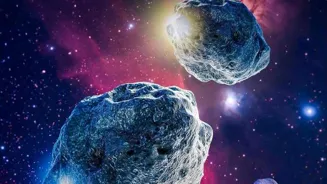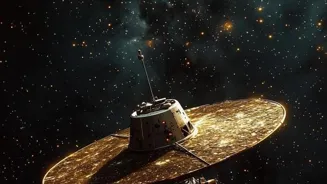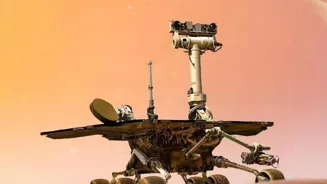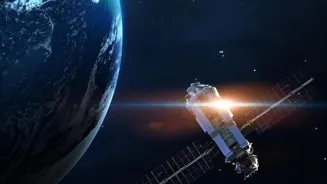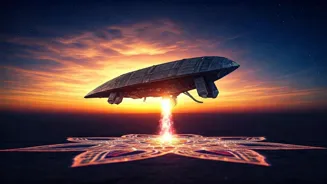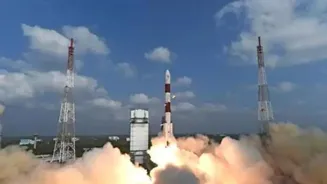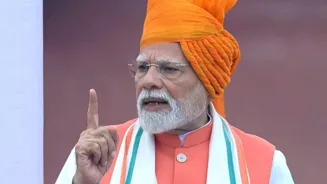Delve into India's cosmic ambitions & the hurdles of long space journeys. ISRO's quest to overcome challenges beckons
The Indian Space Research Organisation (ISRO), having planted the flag on the Moon with
Chandrayaan-3, is now setting its sights on loftier ambitions. Whispers of longer-duration space voyages, perhaps even missions venturing beyond our lunar neighbour, are growing louder.

But embarking on expeditions stretching months, or even years, presents a unique set of challenges that Indian scientists and engineers are diligently working to overcome.
This isn't just about building bigger rockets; it's about ensuring the health, well-being, and operational effectiveness of astronauts in the harsh environment of space for extended periods.
Impact of microgravity on the body studied by ISRO for space missions
One of the most significant hurdles is the impact of microgravity on the human body. Without Earth's familiar pull, bones lose density at an alarming rate, muscles weaken, and the cardiovascular system undergoes significant changes. Imagine osteoporosis kicking in at warp speed!
ISRO is actively researching countermeasures, including specialized exercise regimes and nutritional supplements, to mitigate these effects. Think of it as a cosmic gym membership coupled with a precisely tailored dietary plan.
Furthermore, the psychological toll of prolonged isolation and confinement cannot be ignored. Astronauts need to be resilient, adaptable, and capable of functioning effectively as a team, even under extreme stress.
ISRO develops shielding to protect astronauts from space radiation
Radiation exposure represents another formidable challenge. Outside Earth's protective atmosphere, astronauts are bombarded by high-energy particles from the Sun and cosmic rays from deep space. This radiation can damage DNA, increasing the risk of cancer and other health problems.
Developing effective shielding technologies is crucial. ISRO scientists are exploring innovative materials and designs to protect spacecraft and habitats. Think of a cosmic raincoat shielding the crew from harmful radiation, ensuring their safety throughout the mission's duration.
And then there is the question of resources. Carrying enough food, water, and oxygen for a multi-year mission is simply not feasible.
India develops self-sustaining space systems, limits reliance on Earth
India's space program is making strides in developing closed-loop life support systems. These systems recycle air, water, and even waste, minimizing the need for resupply missions.
Imagine a self-sustaining ecosystem within a spacecraft, transforming waste into resources, and ensuring the astronauts have everything they need. Additionally, reliance on Earth-based communications can be problematic, especially for missions venturing far from our planet.
Communication delays can hinder real-time problem-solving and create a sense of isolation. Developing autonomous systems and advanced artificial intelligence can help astronauts manage tasks and make decisions independently.
ISRO develops nuclear fusion tech for spacecraft power
Power poses another set of challenges. Far from the reach of the sun, power is extremely important to keep the ship going and so are the systems that will safeguard all instruments and the crew. Nuclear fusion, which is a viable option for long duration space mission will power the spacecraft.
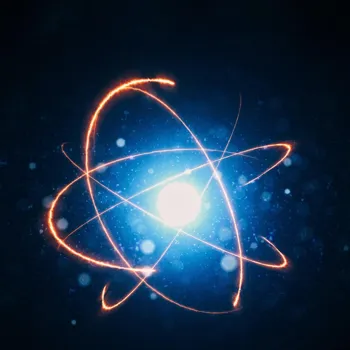
ISRO scientists has been working upon the technologies for a long time and soon make breakthrough.
indian space agency collaborate with USA to enhance technology
The Indian space agency are looking into all facets involved and working with other nations like USA to improve our technology and knowledge.
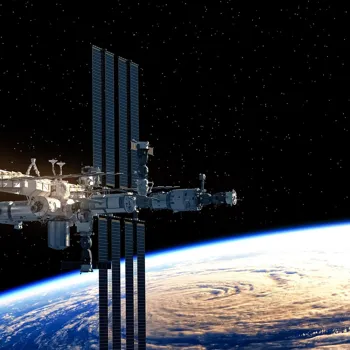
Space maintenance in space is challenging; ISRO invests in robotics for repairs
Maintaining equipment and performing repairs in the unforgiving environment of space also presents a unique challenge. Spacecraft systems need to be robust, reliable, and easily repairable.
Astronauts must be trained to perform a wide range of maintenance tasks, from fixing faulty wiring to replacing entire components. On top of that, they must be able to perform every task with limited tools and resources.
ISRO is investing in robotics and automation to assist astronauts with these tasks. Think of robotic 'space mechanics' that can assist our astronauts in the repair work, making it easier to carry out repairs while on such a mission.
They might also be in a position to manage issues and also communicate with personnel on Earth.
AI Generated Content. Glance/InMobi shall have no liability for the content
